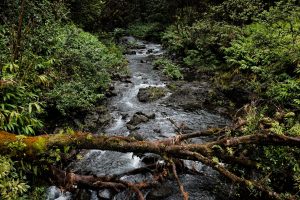10 Ways to Care for Your Watershed
Creation, Creation CareContributed by: A Rocha

To celebrate watershed month at A Rocha Ontario, here are ten ways to love, protect, and preserve your watershed.
1. Tap into your own water supply
Most tap water in Canada is safe to drink. Not only is bottled water redundant, but it is also water-intensive to produce (not to mention expensive). Three litres of water are used to produce one litre of bottled water!
2. Get Outside
Into geocaching, that treasure hunting game played with GPS devices? Create a geocache trail at key points in your watershed! Include bits of information about the waterways and neighbouring lands. Hop into a canoe, and paddle down two or three rivers in your watershed. Visit their headwaters. Brave their rapids. The more you see and experience firsthand, the better you’ll understand the interconnectivity of your watershed.
3. Be a Good Water Resident
In North America, 60% of household water consumption happens outdoors, where it is spent watering gardens or washing cars. But we don’t need to use drinkable water! Rainwater is a free and relatively clean source of water. But once it hits the pavement, it becomes polluted with metals, motor oils, pesticides and E. coli. When untreated, stormwater drains into creeks and rivers, where it both pollutes and erodes riverbanks, damaging habitat critical for aquatic life. If your roof has downspouts, then the solution is simple: install a rain barrel. Rain barrels can decrease household water use by as much as 47%, and reduce stormwater runoff.
4. Get Rid of Hard Surfaces
The more hard surfaces we generate, the more stormwater runoff we create. Since 8 in 10 Canadians live in an urban environment, our lifestyle is the main culprit. But porous surfaces such as interlocking pavers, flat stones, and decking allow rainwater to infiltrate the soil. Consider this type of material when installing a new patio or rebuilding a walkway or driveway.
5. Landscape with Low-maintenance Native Plants
Design a native plant garden! Native plants are more tolerant of drought conditions and are better suited to local soils and pests.
6. Clean Up
Yard litter causes storm drains to clog and can be transported to creeks and waterways. Never dump leaves, grass, or other organic waste onto the street, creek banks or into the creek itself. Although leaves and other organic waste are biodegradable, adding an excessive amount of them to the creek system depletes oxygen in the water and can stress or kill fish and other aquatic life. It also suppresses vegetative growth, which helps to stabilize creek banks.
7. Become an Expert and Advocate
Pick any water issue, and do a deep dive. National water policy? Stormwater management? Boil water advisories across Canada? Join a local water advocacy group. Write a letter to your city councillor or Member of Parliament.
8. Get Involved
Donate your brains and brawn to a “riverkeeper” group and help with stream cleanups, riparian restoration efforts, public engagement, species counts or creek monitoring.
9. Properly Irrigate Lawns and Gardens
Use meters, timers, or other metering devices to control water use. Over-watering means excess fertilizers and pesticides flowing in ditches and storm drains. Observe irrigation carefully. If water is running off its intended landscape, you are likely applying too much water in too short a time period. Get rid of that thirsty green carpet and plant a rain garden, or use drought-tolerant plants. (see #5)
10. Avoid or Minimize the use of Fertilizers and Pesticides
Many home gardeners over-apply fertilizers and pesticides. Always follow application directions. If used excessively, fertilizer can make its way to nearby creeks and create algal blooms that deplete the oxygen supply in the water. Avoid applying fertilizers and pesticides during the rainy season or on windy days. Store chemicals in a protected area to avoid runoff.
Original article found at: https://arocha.ca/watershed-care/


